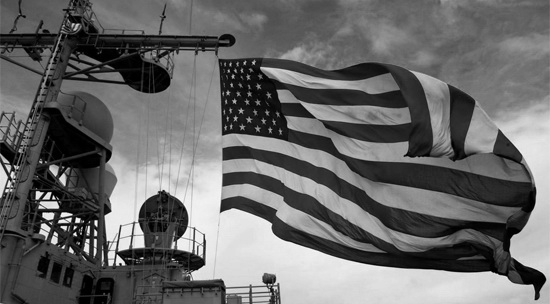Posted on 28th October, 2019

Of all veterans in the military, members of the U.S. Navy faced the highest levels of asbestos exposure during their service. Fire was a significant concern in ships loaded with fuel that was highly heated and vulnerable to attack, thus, it was crucial to take all the necessary steps to prevent fires, including using fire retardants like asbestos. Most of the equipment of the vessel was made of mixtures containing large amounts of asbestos, from boilers to gaskets, valves, pipes and many others.
Asbestos exposure took place due to the fact that the rooms in which these components had to be regularly inspected and repaired, were extremely poor ventilated, so the dust emanating from the asbestos-containing equipment could easily be inhaled.
The Pervasive Use of Asbestos Products Aboard U.S. Navy Ships
The heydays of asbestos happened prior to and during World War II when the U.S. Navy increased the number of asbestos-laden vessels in anticipation of conflict. From the 1930s to the early 1980s, asbestos was extensively used by the Navy, which led to thousands of veterans being diagnosed with severe conditions such as asbestosis, lung cancer and pleural mesothelioma within the last decades. Although it had various applications, asbestos was primarily employed as insulation and fire-retardant for piping, boilers, electrical fixtures, and other materials.
In the late-1970s the U.S. military recognized the health risks associated with long-term exposure to asbestos. Because of the high costs involved in the process of total asbestos replacement in all ships, the Navy decided not to adopt a one-time total asbestos removal policy. With this decision, the health risk posed by exposure to asbestos for all marine personnel and support workers remained present at extremely high rates. Studies have shown that more than 30 percent of Americans now dealing with mesothelioma were exposed to asbestos while serving in the military and the Navy was the branch of service most affected. After asbestos exposure, it can take 10 to 50 years for asbestos-related diseases to manifest. Consequently, veterans from all branches of the armed forces including the Navy are now at risk of developing asbestosis or mesothelioma due to asbestos exposure sustained while on active duty serving their country.
Navy veterans who are at an increased risk of developing an asbestos-related illness include those who:
- Worked in shipyards from the 1930s through the 1990s
- Served below deck before the early 1990s
- Were involved in the repair of asbestos-containing equipment or removal of asbestos materials
- Handled, removed or disturbed any asbestos-containing materials during duty
- Worked as pipefitters, welders, boiler tenders, electricians, machinists, water tenders, and fire control technicians before the mid-1990s.
Compensation Is Available for Navy Veterans with Asbestos-Related Illnesses
According to the War Related Illness and Injury Center, there were specific occupations connected to service-related asbestos exposure. Navy personnel who worked below deck, in turbine, boiler and engine rooms, came into contact with asbestos-containing materials on a daily basis. An engineman had the role of operating, maintaining and repairing the Navy ship's engines, electrohydraulic controllable-pitch propeller systems, and steering engine. The close quarters and poor ventilation allowed asbestos fibers emanating from the asbestos-containing equipment could easily be inhaled. Once they are trapped in the body, asbestos fibers lodge themselves within the lungs, heart or the abdomen irritating them constantly until some forms of cancer develop. There have been a number of studies that have investigated the risk of getting cancer in parts of the body other than lungs and concluded that asbestos exposure might be related to cancers of the larynx, stomach, colon, and rectum.
In October 1975, the Navy issued a policy to eliminate the use of asbestos and materials containing asbestos as acceptable for thermal insulation. However, removing asbestos from discontinued vessels put workers and veterans at risk since parts of the ships were often sold or used in other military branches, which again lead to additional asbestos exposure.
If you or a loved one served aboard a Navy ship and have been diagnosed with an asbestos-related disease, there are special benefits available to you, including significant financial compensation. VA benefits and financial compensation options like VA claims, disability compensations, and asbestos trust funds are available to help with the costs you have already incurred and expenses you will have as you continue to battle your disease. We invite you to call our office today for a free consultation. Our team may pursue compensation through asbestos trust funds and VA benefits as well.